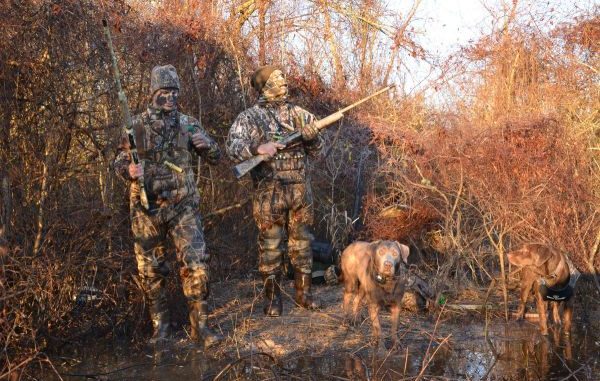
Chuck Wilkins is from Denham Springs, but he spends as much time as possible hunkered down at his hunting camp south of Deer Park.
“I hunt pigs, deer, squirrels and ducks,” Wilkins said. “I’ll grab anything that’s fair game.”
Denham Springs is a long way from Deer Park — nearly 120 miles — but Wilkins knows that the drive is worth it.
“A buddy brought me to what was then Red River Wildlife Management Area for squirrel hunting,” he explained. “I saw a lot of deer tracks and came back every year to hunt.
“Finally, I bought a camp in 2004.”
When Wilkins started hunting the area, two WMAs — Red River and Three Rivers — existed adjacent to each other. Located near the confluence of the Mississippi and Red rivers, they were joined together as Richard K. Yancey WMA in 2013.
Wilkins has rounded out his hunting opportunities by leasing in partnership 675 acres of Wetland Reserve Program land, primarily for deer hunting.
He duck hunts on the WMA in the mornings, and after legal duck-hunting hours end at 2 p.m. he hunts deer on his lease.
“It’s a lot easier to hunt from a box stand, which isn’t legal on the WMA, than to climb a tree,” he explained.
WRP lands are an excellent option for deer hunters to consider. Until the late 1960s and early ’70s, the rich Mississippi River bottomlands of Northeast Louisiana were largely clothed in wildlife-rich, bottomland hardwood forests.
But skyrocketing prices for soybeans in Asia resulted in large tracts of that land being cleared of trees and converted to bean fields. At the prices then being paid for soybeans, a farmer could lose two crop years out of five due to flooding and still make money.
Then the soybean price bubble burst. The land was too wet to profitably farm for other crops, and at the same time it was pretty well ruined as wildlife habitat.
In 1990, Congress created the Wetlands Reserve Program. Under the program, landowners who put their property in either 30-year or permanent easements to the government would receive yearly payments from the government.
Additionally, WRP would pay most or all of the costs of restoring the land to its natural state. Although the land could no longer be farmed, landowners retained ownership and could sell or lease the properties — an ideal situation for hunters looking for leases.
Louisiana is one of the program’s top 5 states, as measured by the percentage of its lands enrolled in WRP. And the lion’s share of it is in the Mississippi River floodplain in northeastern Louisiana.
As for duck hunting on Richard K. Yancey WMA, a hunter has two options, Wilkins explained.
“The greentree reservoir is excellent for wood ducks and mallards,” he said. “The other thing is open-water lakes. There are 30 or 40 of them, like Upper Sunk Lake, Lower Sunk Lake, Silver Lake and Grassy Lake. Most of them have boat launches into the lake or into connecting bayous.
“In the open-water lakes, we build temporary blinds of canes, willow, or buttonwoods. We pull the boats into the blinds. They are good for mallards, grays and lots of damn bluebills. We try not shooting those. Sometimes we get pintails too.
“No matter where you hunt, though, courtesy means that you don’t set up next to other hunters.”